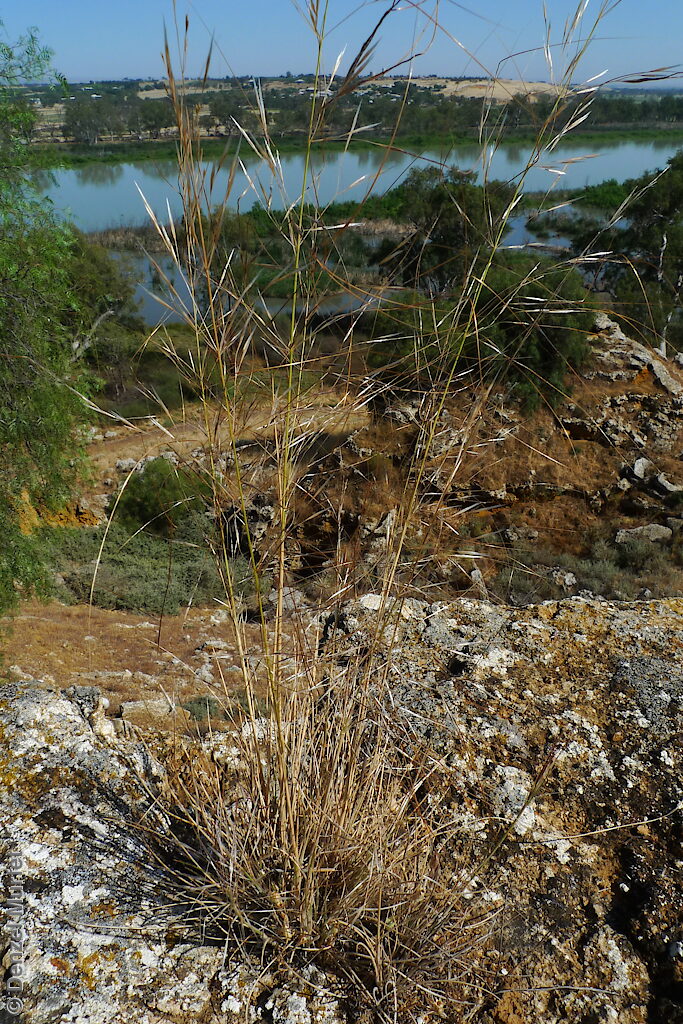
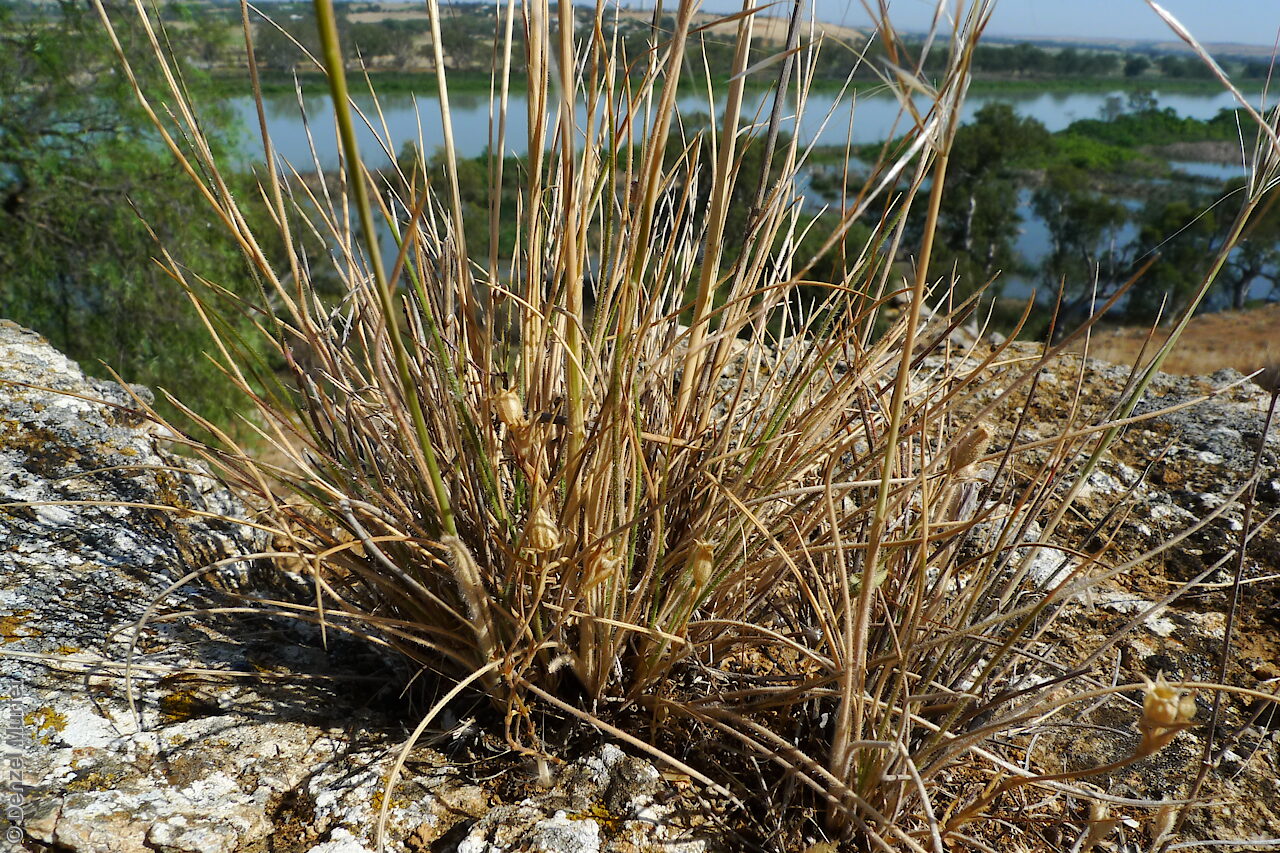
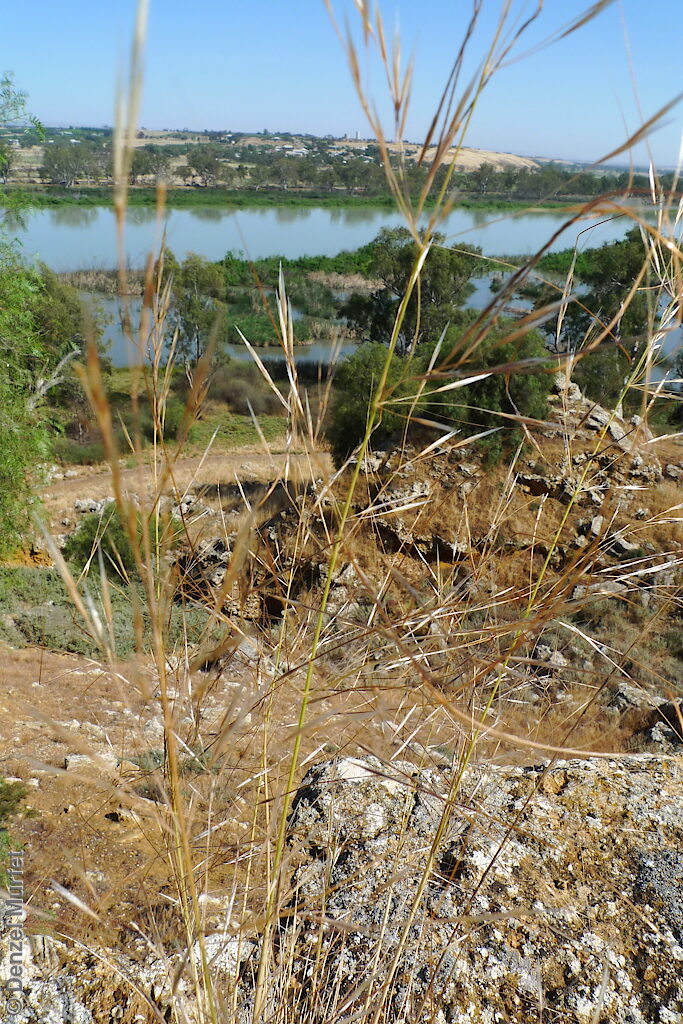
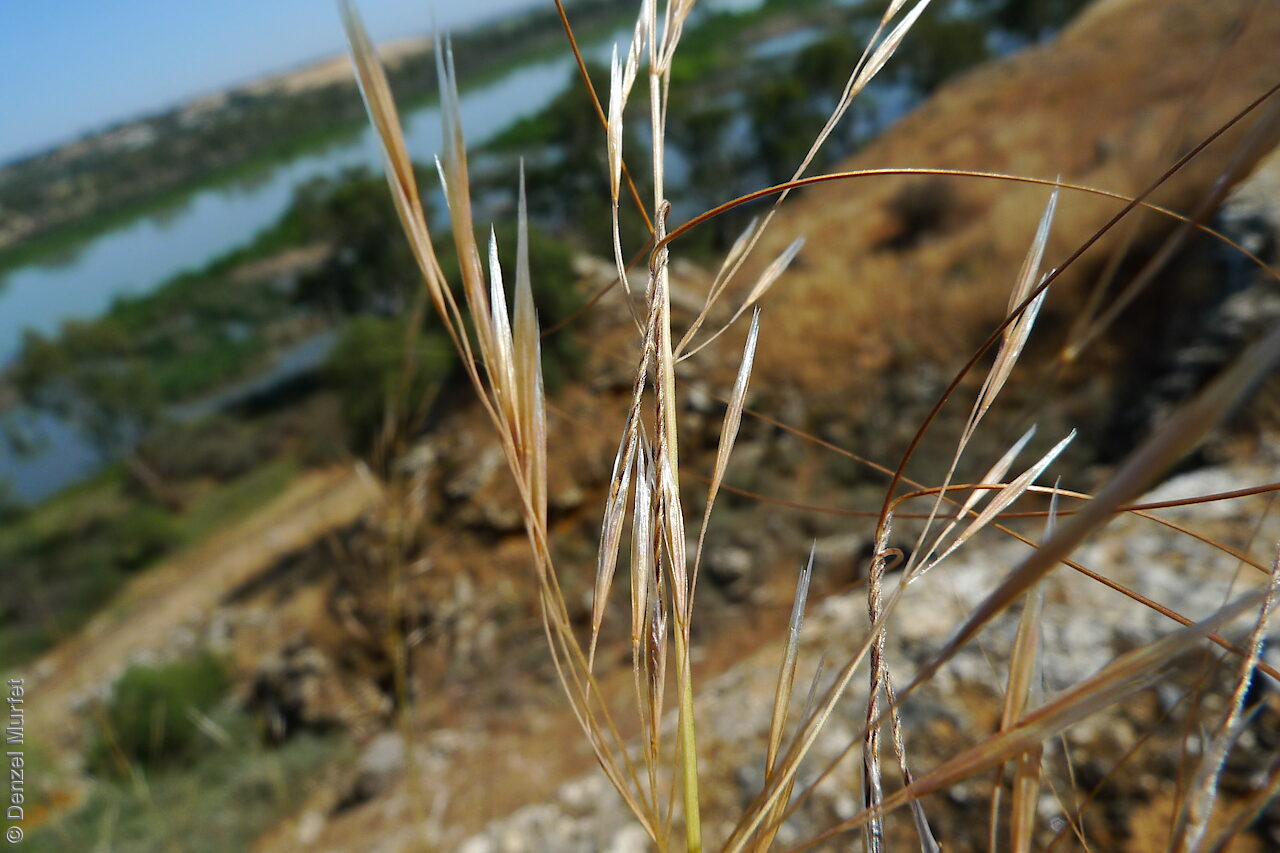
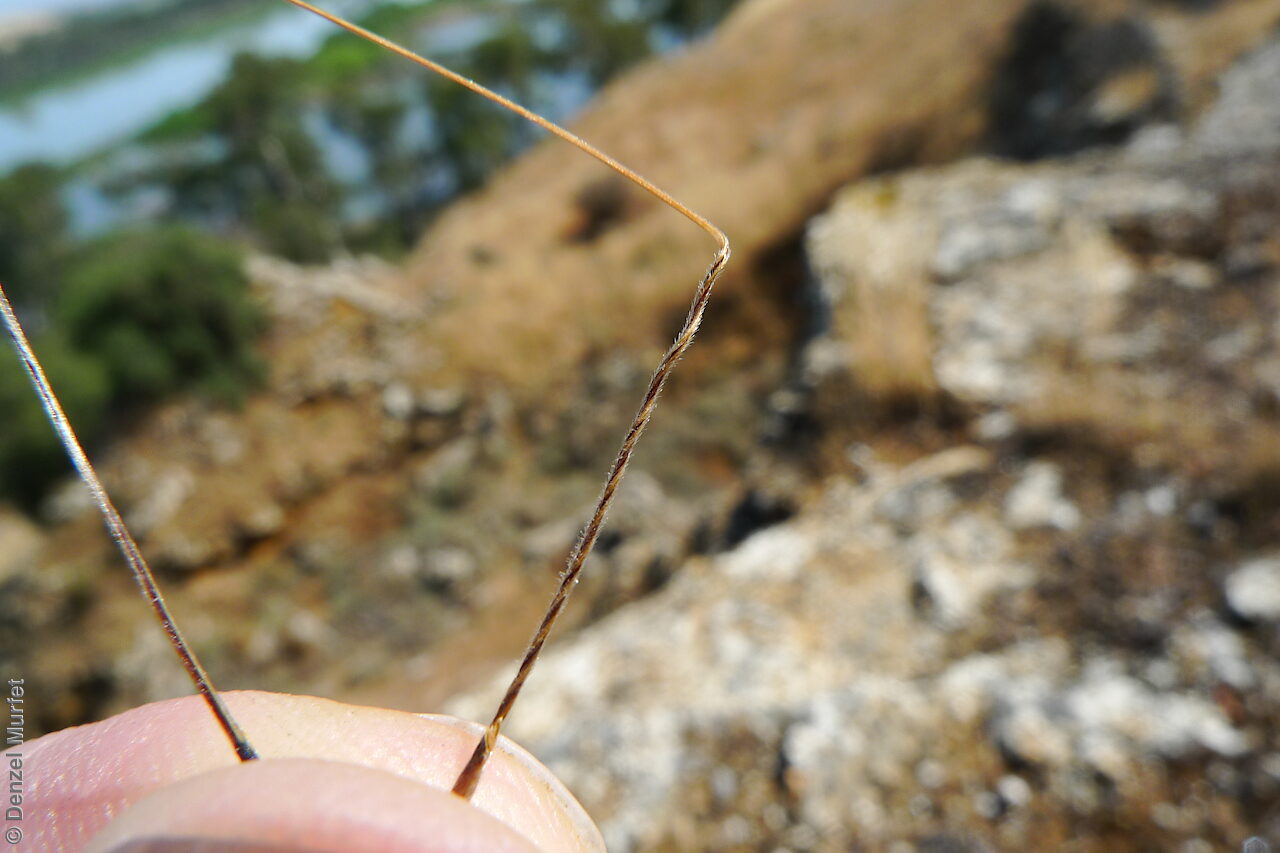
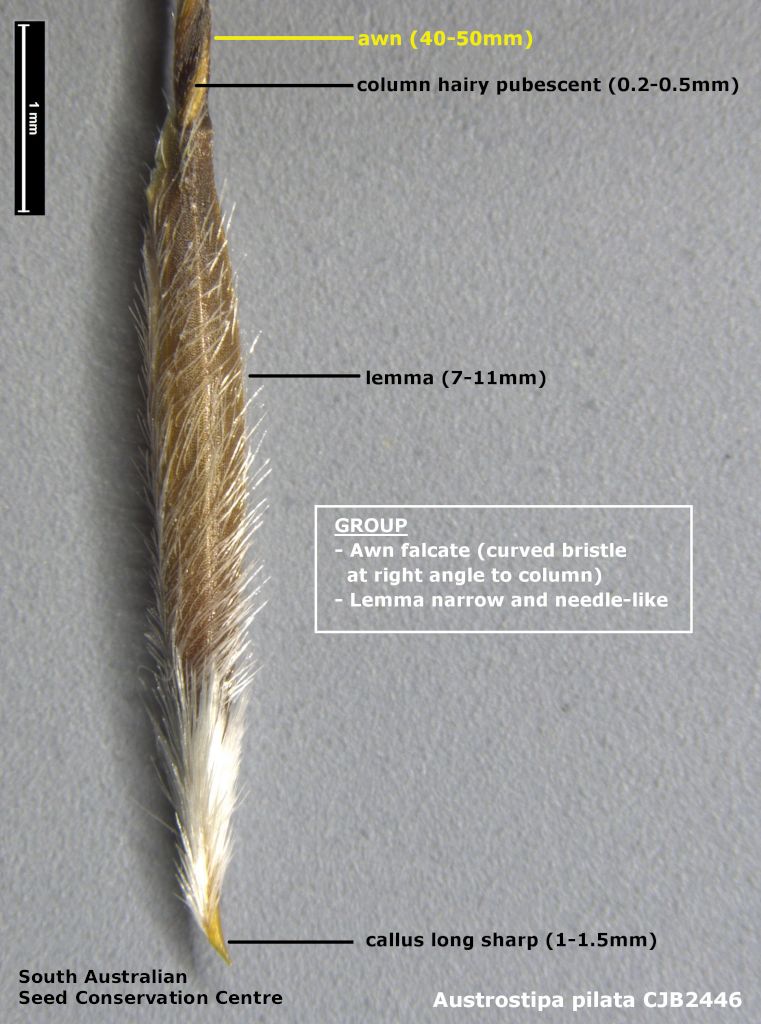

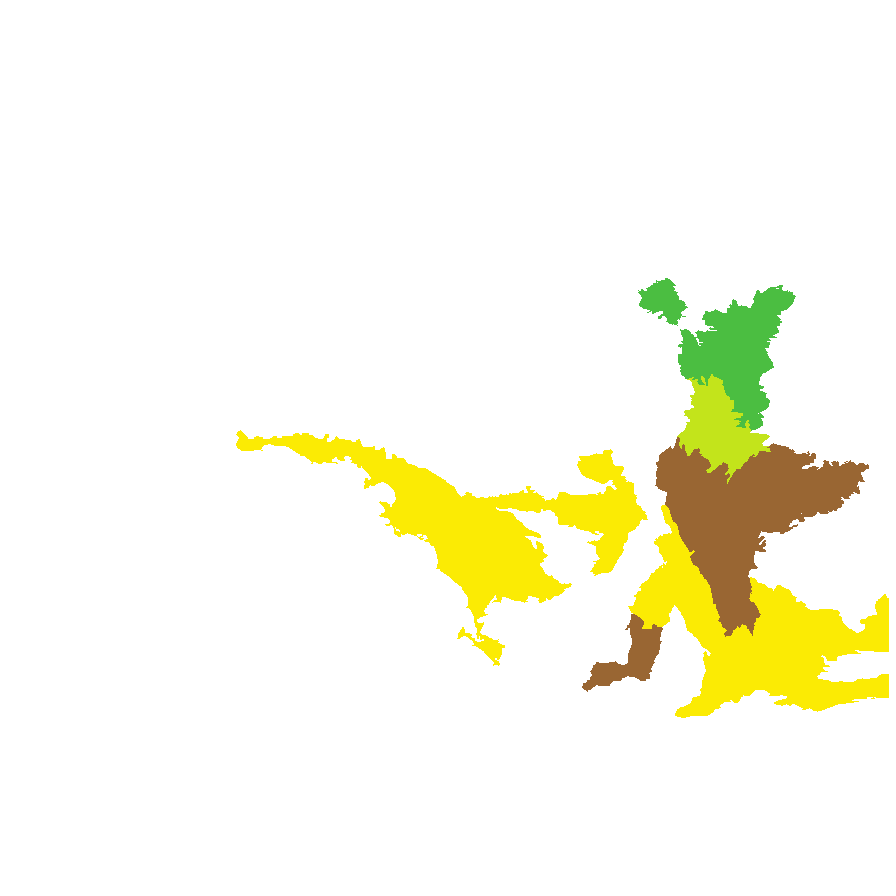
Prior names
Stipa pilata
Etymology
Austrostipa from the Latin 'auster' meaning south and the genus Stipa, referring to the genus being allied to Stipa but restricted to Australia. Pilata from the Latin 'pilus' meaning hair and the suffix '–ata' meaning possessing, referring to its long hairs on the leaves and awn.
Distribution and status
Near endemic to South Australia and found on the Eyre Peninsula, Flinders Ranges and the northern Mount Lofty Ranges growing on hill slopes in mallee. Also known from only one collection in Victoria. Native. Rare in South Australia. Very rare in Victoria.
Herbarium regions: Flinders Ranges, Northern Lofty, Murray
NRM regions: Eyre Peninsula, Northern and Yorke, South Australian Arid Lands
AVH map: SA distribution map (external link)
Plant description
Loosely tufted perennial grass to 80 cm high, with firm and slender culms (to 1 mm diam. at base) and pubescent to almost glabrous black nodes. Leaves scabrous or pubescent but never densely pubescent; white hair tufts in axils; leaf blade erect, sharp-pointed and strongly inrolled to 12 cm long and 6 mm wide; sheaths slender and tight around culm. Inflorescence a sparse slender contracted panicle to 20 cm long with straw-coloured glumes to 10 mm long. Flowering between October and November.
Key to this species: awn falcate (curved bristle at right angle to the column); lemma narrow and needle-like; awn 40-50 mm with column pubescent; leaves erect, broad (2-6 mm), inrolled with pungent tips; never dense pubescent; white hair tufts in axils; sheath slender and tight around culm; nodes black and not concealed; panicle sparse slender contracted. Fruits are brown linear-elliptic lemma to 11 mm long with a granular surface and covered in white hairs, sparse toward apex; callus long sharp to 1.5 mm long; awn falcate to 50 mm long with column pubescent. Seeds are yellow-brown narrow ellipsoid grain to 2.5 mm long within the lemma. Seed embryo type is lateral.
Seed collection and propagation
Collect seeds between November and January. Use your hands to gently strip the seeds (lemma) off the mature fruiting spike, those that are turning brown. Mature seeds will come off easily compare to the immature seeds that remain on the spike. Alternatively, you can break off the whole fruit spike to allow some of the seeds to mature further. Place the seeds/spike in a tray and leave to dry for two weeks. No further cleaning is required if only seed collected. If seed spikes collected, use hand to strip off the mature seeds. Store the seeds with a desiccant such as dried silica beads or dry rice, in an air tight container in a cool and dry place. Viability of grass seeds could be very variable, depending on time of seed collections and seasonal conditions.
| Location | No. of seeds (weight grams) | Number of plants | Date collected | Collection number Collection location | Date stored | % Viability | Storage temperature |
|---|---|---|---|---|---|---|---|
| MSB | 3,700 (3.89 g) | 25 | 15-Nov-2007 | RJB75578 Northern Lofty | 50% |
Number of plants: This is the number of plants from which the seeds were collected.
Collection location: The Herbarium of South Australia's region name.
% Viability: Percentage of filled healthy seeds determined by a cut test or x-ray.